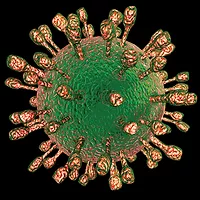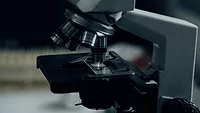Nanotechnology for Foodborne Pathogen Detection

Credit: koto_feja/E+ via Getty Images
A recent study published in the Journal of Nanomaterials explores the use of electrochemical biosensors based on nanomaterials for pathogen detection and monitoring in food and water. Nanomaterials are material units that are less than 100 nanometers in size, and biomarkers are biological molecules taken from an organism that can be reproduced for testing and analysis.
Nanomaterials that have been utilized with biomarkers to detect foodborne and waterborne pathogens include quantum dots, gold, silver, magnetic materials, metal oxides, and carbon-based materials. Recent developments in nanotechnology have allowed for more rapid, accurate, and cost-effective biosensors for pathogen monitoring.
The researchers express that there is a need to consistently employ a reliable approach for collecting and analyzing foodborne and waterborne pathogens, as culture-dependent methods are not sufficiently sensitive and take a long time to produce results. Additionally, many pathogens are not able to be cultured or produce false negative results. On the other hand, molecular-based methods are highly specific to species of pathogens, can provide phylogenetic information, and allow for the tracing of contamination sources. However, these molecular methods require highly skilled labor and expensive instruments.
A possible alternative method proposed by the study involves the use of nanosensors. Nano-based sensors can measure biological responses and convert the response signals for interpretation and analysis. The most widely used signaling methods are optical, electrical, and magnetic. However, nanotechnologies for the detection of pathogens in food and water are still in development.
The researchers assert that the use of nanosensors for food safety assurance purposes can offer many benefits. Nanosensors can provide rapid, accurate, easy, and cost-effective results. Nanosensors can also be automated and have the potential for portability. Additionally, biosensors can address the issues of skilled labor and high-cost instruments, as they are simple to use and do not necessitate the use of trained staff.
Further studies must be conducted to determine the most effective and accurate detection methods for foodborne pathogens, which may be the use of a combination of methods in tandem. The researchers call for further study of use of nanosensor- and biosensor-based approaches to pathogen detection in food and water.
Looking for quick answers on food safety topics?
Try Ask FSM, our new smart AI search tool.
Ask FSM →






.webp?height=200&t=1657568786&width=200)


